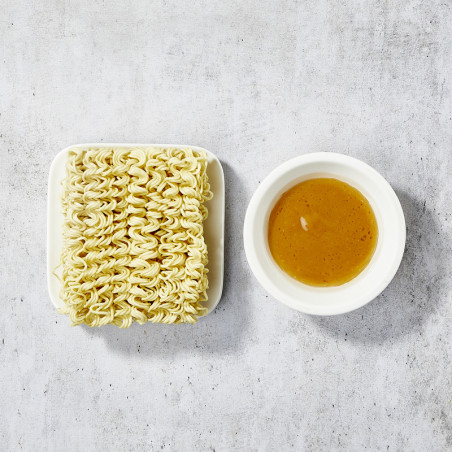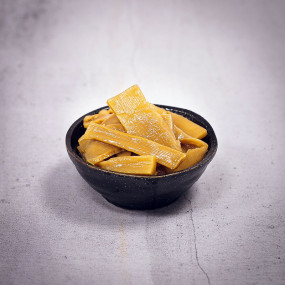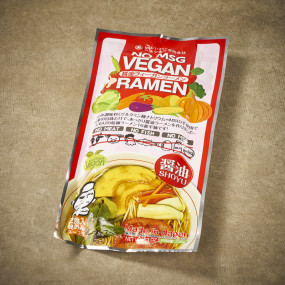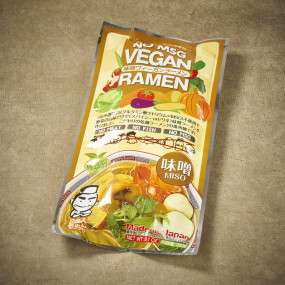Add to my wishlist "Ramen vegan tonkotsu-fu"
Select a wishlist to add this product
There are not wishlist.
This product has been added to wishlist.
View my Wishlists
This product has been added to your wish list.
Remove
This product was successfully removed from your wish lists.


Add to my wishlist "Ramen vegan tonkotsu-fu"
Select a wishlist to add this product
There are not wishlist.
This product has been added to wishlist.
View my Wishlists
This product has been added to your wish list.
Remove
This product was successfully removed from your wish lists.
€3.50
€26.12 / Kg
(5 reviews)


Add to my wishlist "Ramen vegan tonkotsu-fu"
Select a wishlist to add this product
There are not wishlist.
This product has been added to wishlist.
View my Wishlists
This product has been added to your wish list.
Remove
This product was successfully removed from your wish lists.
Introduced to Japan by Chinese traders in the 19th century, ramen quickly developed its own identity once it crossed the sea and landed in its new home.
Today, there are hundreds of different styles of Japanese ramen, and every city in Japan competes for the title of best ramen city, including Sapporo with its miso...
€3.50
€26.12 / Kg
(5 reviews)


Add to my wishlist "Ramen vegan tonkotsu-fu"
Select a wishlist to add this product
There are not wishlist.
This product has been added to wishlist.
View my Wishlists
This product has been added to your wish list.
Remove
This product was successfully removed from your wish lists.
Introduced to Japan by Chinese traders in the 19th century, ramen quickly developed its own identity once it crossed the sea and landed in its new home.
Today, there are hundreds of different styles of Japanese ramen, and every city in Japan competes for the title of best ramen city, including Sapporo with its miso...
€3.50
€26.12 / Kg
(5 reviews)























































